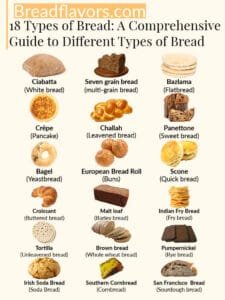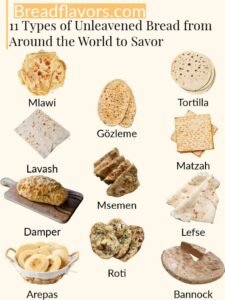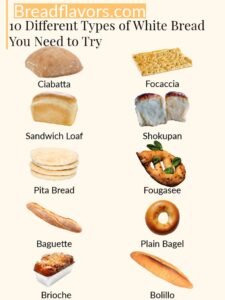
There’s nothing in the world like the smell of a French bakery, with the aroma of freshly baked French bread wafting through the air from the omnipresent bakery ovens.
To be Honest, French bakers are very masterful in the art of bread making. From the rustic baguette de tradition and the buttery croissant that melts in the mouth to soft brioche and various other kinds. French bread delights all bread lovers.
Whether you’re a bread enthusiast or interested in learning more about French bread. In this guide, we’ll explore the 18 popular types of French bread, along with their characteristics, history, flavors, and what makes them special. Read on to find your new favorite Pain Français.
List of the Most Popular Types of French Bread
Baguettes
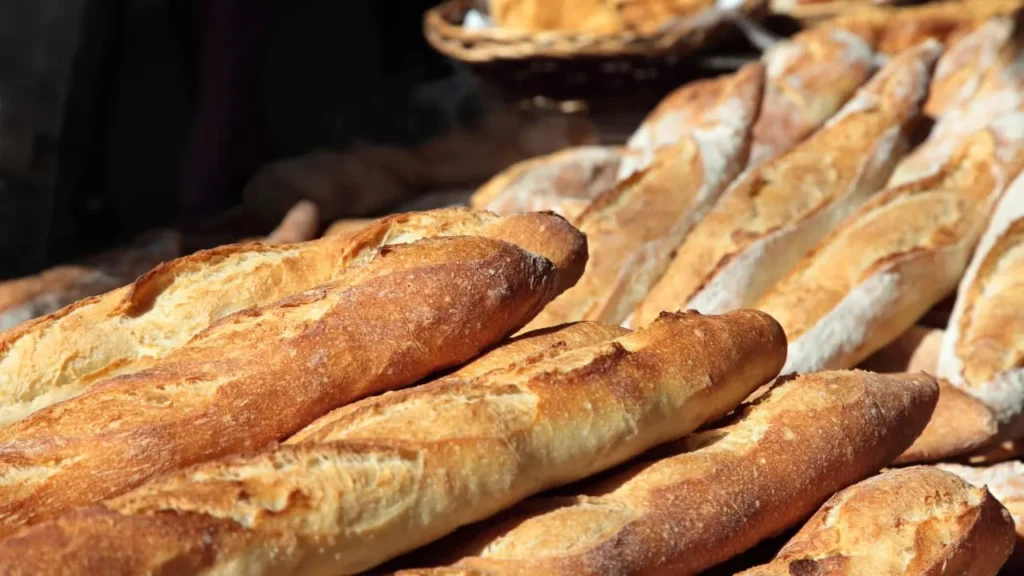
Baguettes have been made in France since the early 18th century, but they didn’t become popular in Paris until the early 20th century. The idea behind la baguette is to make a lighter and more portable bread than the traditional round loaf. So bakers created a long, narrow loaf with a golden, crispy crust and crunchy, chewy crumbs.
Today, UNESCO recognizes baguettes as a national brand and a symbol of French culinary culture. In 1993, the French Prime Minister decreed that baguettes should be made with only four ingredients: flour, salt, water, and yeast or levain (a French sourdough starter).
However, it should be noted that there are 2 main types of baguettes. The traditional baguette, made from sourdough, which has a dark color, often thicker, richer in flavor, and takes a long time to prepare. The classic baguette, made with yeast, which has a lighter color and little flavor and can be prepared in 3-4 hours. If you’re more curious, consider learning exactly what a baguette is and how to keep a French baguette longer.
Other varieties of baguettes: Baguette viennoise, la Flûte, Multigrain Baguette, Olive Baguette, Le pain paillasse, etc.
Brioche
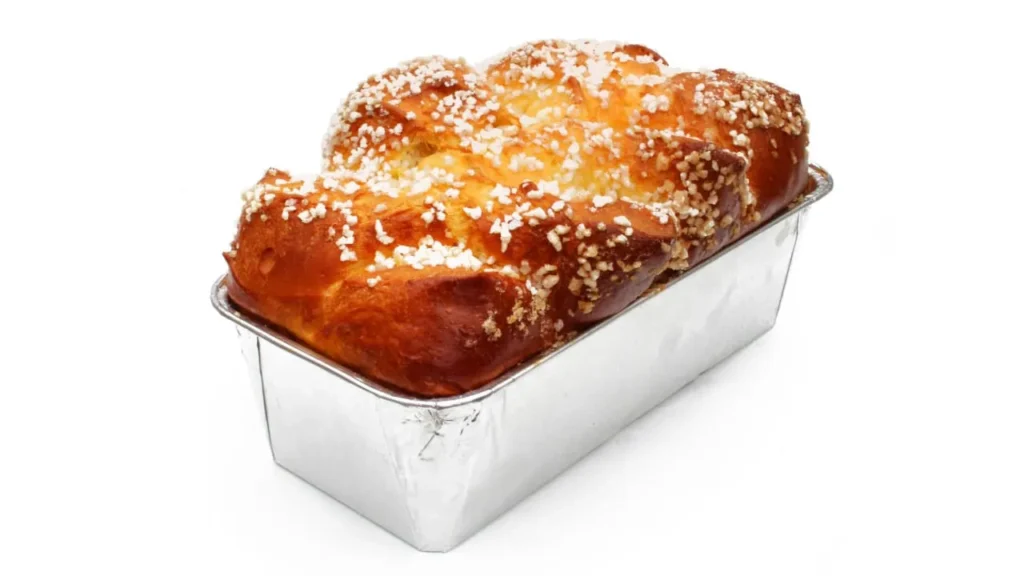
Brioche is a well-known type of French bread that is believed to have originated in Normandy in the Middle Ages. Although its history is somewhat mysterious, brioche is now one of the most beloved French breads around the world.
What makes brioche so special? Its rich, buttery flavor and soft, tender texture make it a perfect complement for both sweet and savory dishes. Even the greatest chefs consider it one of the best breads for grilled cheese and the best bread for French toast.
Because of the popularity of this bread in France and abroad. Both local and international bakers have developed their recipes. Where today we can find various types of brioche apart from the classic one, from regional brioche like Parisian brioche, Lyonnaise, and Nanterre brioche to brioche des rois, buns, milk brioche rolls, the variety is endless. The secret is a buttery, enriched dough with well-formed gluten development.
Pain de Campagne
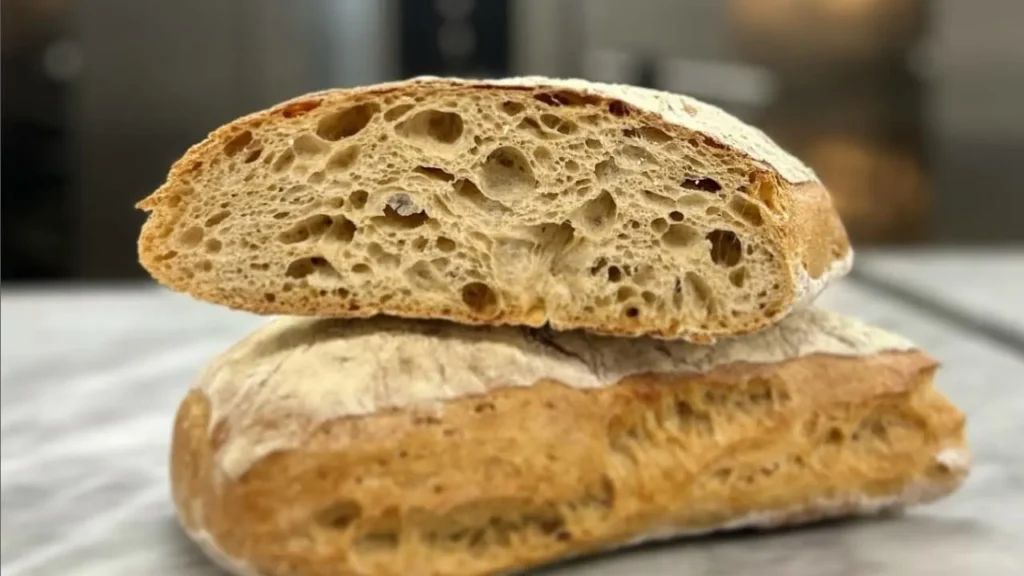
Pain de Campagne literally translates to country bread. It’s a rustic French bread made from a combination of rustic white flour and whole wheat or/and rye flour, salt, water, and a natural leavening agent (yeast, rye sourdough starter, or levain).
Traditionally, this French country bread is kneaded by hand, then goes through several periods of fermentation and autolysis before it is formed into circles and baked. The result is a strong, acidic flavor with a crispy crust and an interior full of irregular holes that is similar to sourdough bread.
Fougasse
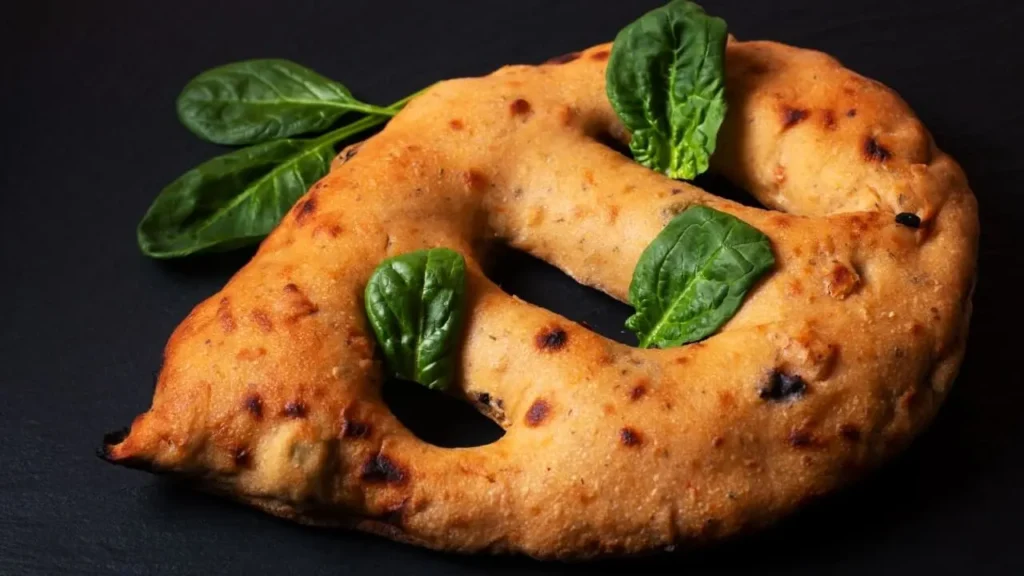
Though it originated in ancient Rome, fougasse is now most closely associated with the regions of Provence. Previously, this flatbread was once made to test the temperature of traditional ovens. But today, bakers make this decorative bread as a response to the Italian focaccia by shaping the dough to resemble a wheat stalk and topping it with sweet or savory toppings.
If you’ve been to France before, you may already know this. The additions of fougasse change depending on the season. For example, in summer, tomatoes, peppers, and zucchini are used, while pumpkin and olives are used in fall, whereas oranges, lemons, and sweet toppings are widely used during winter and citrus season.
Pain de Mie
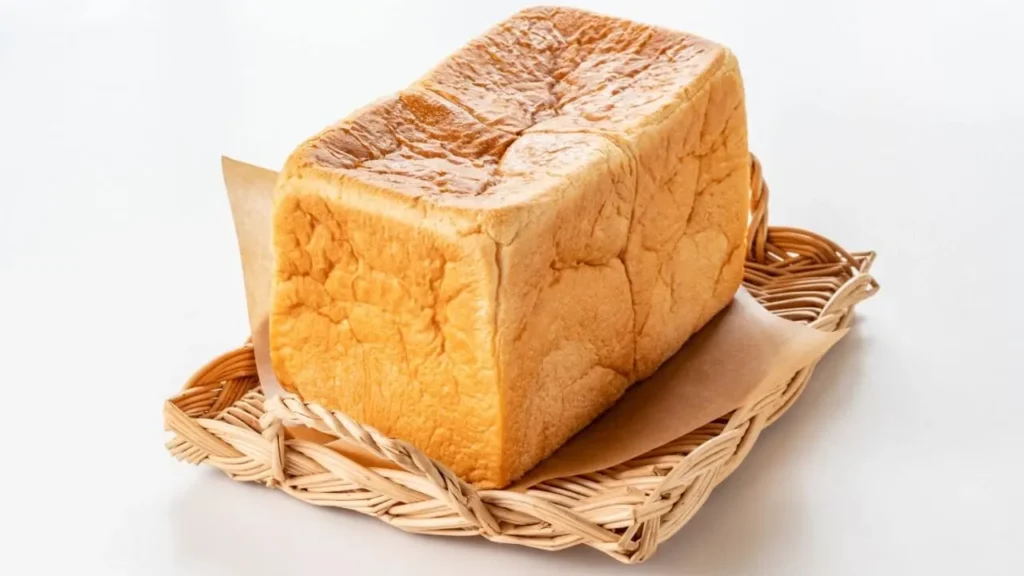
Pain de mie is a very soft, moist bread, characterized by its fine crumb. Unlike other French breads, pain de mie is made from a highly hydrated dough that typically includes bread flour, water, milk, sugar, salt, and sometimes butter, then baked in a covered loaf pan, giving it a rectangular shape, thin crust, and a soft interior.
Besides its ability to stay fresh longer than other types of bread thanks to the enrichment of the dough. Sandwich bread is a versatile bread suitable for sweet and savory meals, often used to make toast or sandwiches, especially for school lunches.
Ficelle
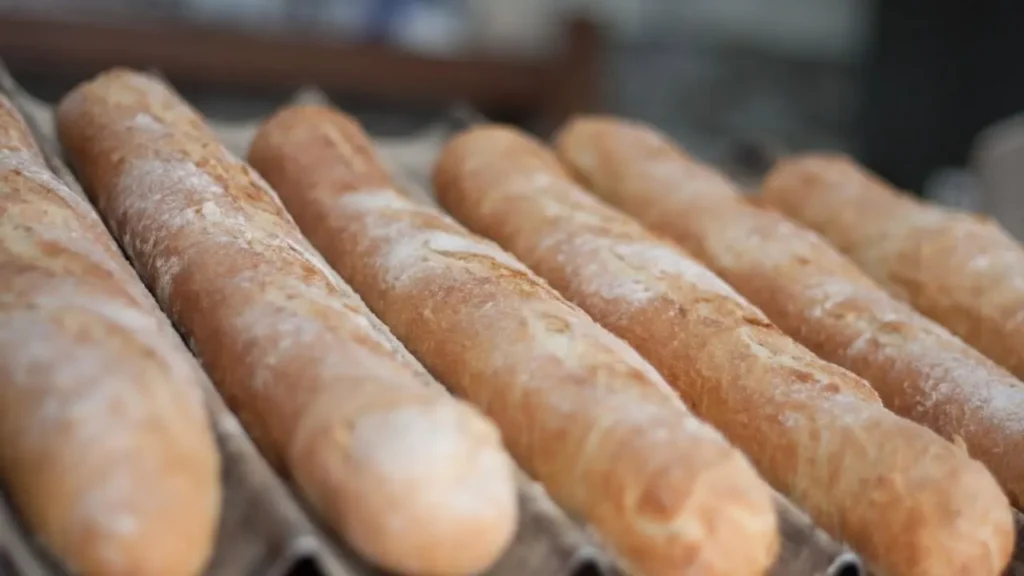
Ficelle means “string” in French. It’s also known as a flute in some parts of France, and around the world as a French breadstick. It’s a long, thin bread made from the same dough as the baguette and its characteristics. Like other French breads, ficelle has its own varieties. The ficelle lyonnaise, in particular, is known for its crispy crust and light, airy interior. It is generally larger and contains a higher proportion of crust than other types of ficelle. Some bakers also shape it into circles or knots shape. Regardless of the shape, ficelle recipe is easy to make and can be made with yeast or levain.
Pain Bâtard

Вâtard, means “bastard” in French. It’s a kind of French bread that has typically the same shape as a boule bread or baguette, but with a wider width and shorter length. The name comes from the fact that pain bâtard is made from the leftovers of other bread doughs.
This bread usually allows bakers a lot of freedom compared to other varieties of French breads like baguettes. That is, there are no set rules, as it can be made with any type of dough, shaped and weighed to the preferences of the bakers.
Boule de Pain

Get its name from its shape. boule de pain is a round loaf made from the four basic bread ingredients. After the kneading and autolysis process, the bread is shaped and allowed to rise in a circular basket before being scored and baked. The result is a golden, crispy, crunchy crust with a soft, fluffy crumb.
Although its popularity declined in the early 19th century in the face of the baguette. Boule de pain is still widely consumed in France, thanks to its ability to stay fresh for more than 3 days, making it more consumable than other crusty breads.
Croissant
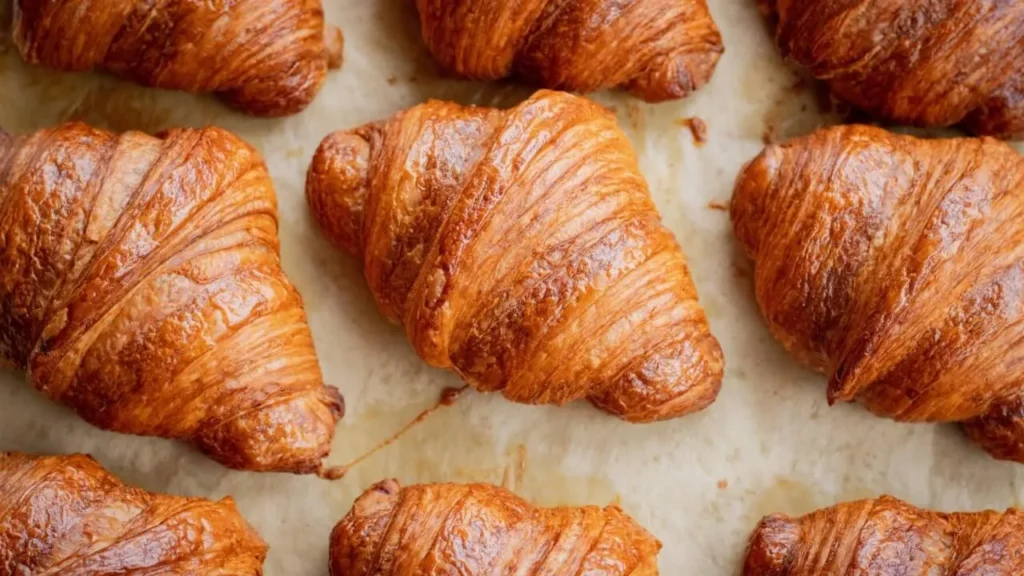
A classic French Viennoiserie with a flaky, rich, buttery texture and a crescent shape. Despite its strong association with French cuisine, most sources agree that the croissant originates from Austria, where it was known as the Kipferl. Popular stories attribute it to being born to celebrate the defeat of the Ottoman Empire at the Battle of Vienna in the 16th century and made its way to France in the 19th century.
However, the croissant became a signature French pastry when Sylvain Claudius Goy developed the first version of its now-famous dough, replacing the traditional brioche dough. This new method incorporated lamination, a technique that involves folding butter into the dough to create the delicate, flaky layers characteristic of a croissant.
Today, there is a wide variety of croissants, including, chocolate, raisins, pistachio, almond croissants, and more. Each offering a unique twist on this classic pastry.
Pain au Couronne
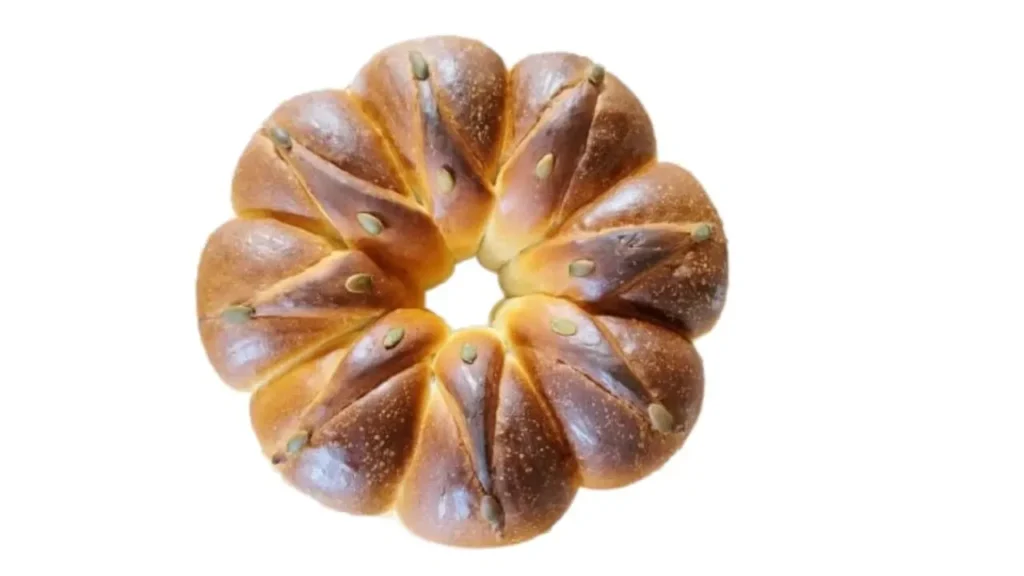
Known for its crown-like shape. Bakers form it by arranging small dough rolls in a circular pattern on a flat base, leaving a hole in the center. During baking, the rolls rise and connect at the top, forming a crown.
Among the most renowned varieties are la couronne lyonnaise and la couronne bordelaise. La Couronne Lyonnaise is made from a single piece of dough, shaped into a ball, flattened with the palm, and gradually stretched into a crown. Le Couronne Bordelaise, on the other hand, is made from eight small balls of dough that are fused together to form a crown.
Pain Brie
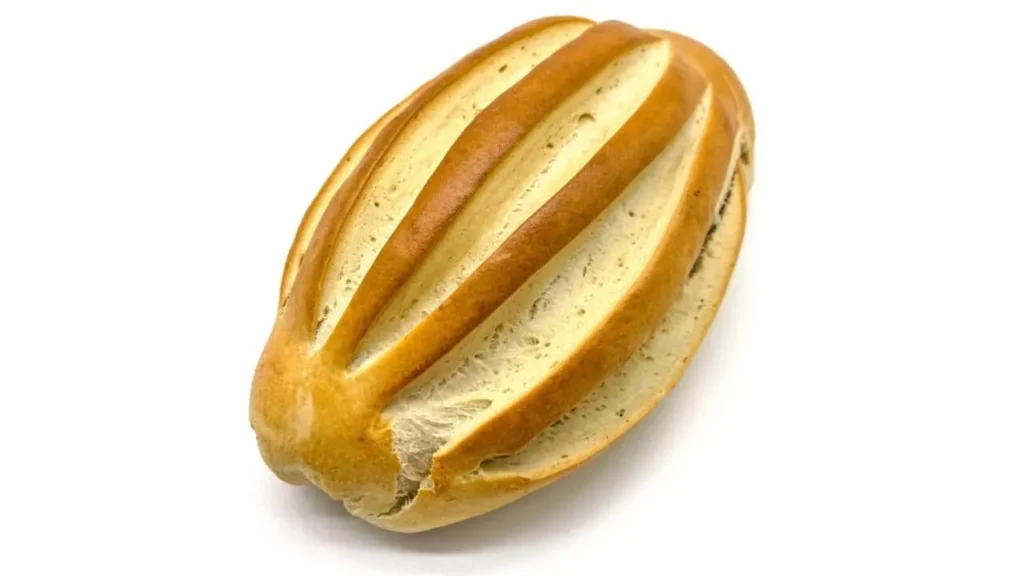
Pain brié is a traditional French loaf, introduced to Normandy in 1588 from the shipwreck of the Calvados on the Normandy coast. It was preserved by fishermen during long navigations due to its dense texture, which allowed it to stay fresh for a long time.
The bread can be easily recognizable by its blonde crust, with parallel lines along its length and a firm crumb. Its unique shape is created through a special process using a tool called a brié, which gives it its name—a semi-circular cast-iron bowl with a bowl—shaped arm that compresses the dough, removing air and creating its distinctive shape and dense consistency.
However, the process of making it today has changed, as bakers use sourdough dough and then shape it by hand and score it to form parallel lines along its length.
Pain aux Noix

As the name suggests, French walnut bread is an artisan bread rich in walnuts and sometimes hazelnuts are added. It’s usually made with a base of wheat flour that is sometimes mixed with rye or whole wheat flour, water, salt, yeast or sourdough and sugar. Its slightly sweet, nutty taste, crispy crust and soft crumb make it very popular throughout France, particularly in the south-western regions , where it often accompanies regional dishes.
Pain D’épicеs
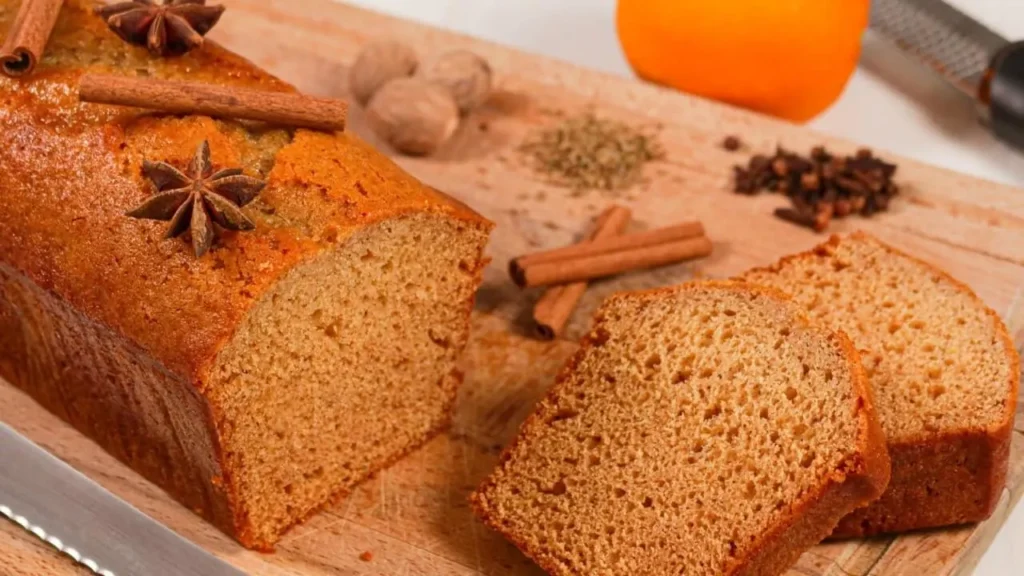
Traditional French sweet bread gets its distinctive flavor from a combination of spices such as anise, cloves, nutmeg, and cinnamon. Previously, Spice bread was made from a sourdough dough based on rye flour instead of white flour, but today it is made using chemical leavening agents such as baking powder and sodium bicarbonate, as a type of quick bread.
However, the exact recipe of this leavened bread can vary depending on the region. In Alsace, bakers often added honey and cinnamon, whereas in Beaujolais, they flavor it with orange peel and almonds. Meanwhile, Alpine bakers create a darker texture by using molasses.
Faluchе

Also known as pain du Nord, Faluchе is a type of white bread that is mostly associated with the northern region of Pas-de-Calais. One of its characteristics is that it is neither round nor flat, just like a deflated ball. Its dough is made from wheat flour, yeast, water, butter, and salt that can easily be made at home.
Because of its soft crumb and undercooked white crust. This bread is often associated with breakfast, where it’s spread with butter, jam and sugar, but it’s also perfect for making savory sandwiches with meat and vegetables.
Pain au Levain
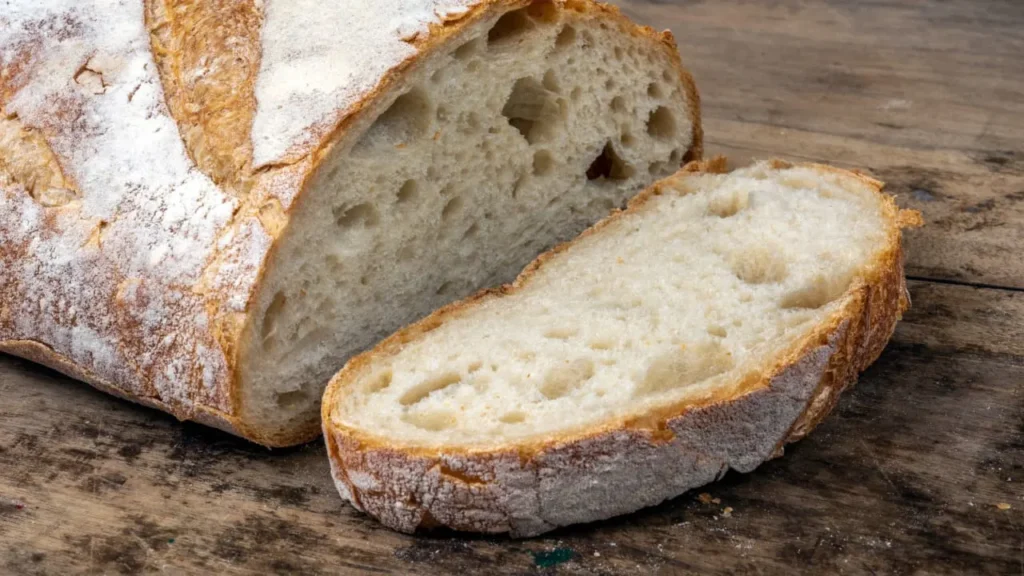
Did you know that most French bread types can be made with a small amount of yeast, even if they’re made with Levain? That’s what makes Pain au Levain special. Just like sourdough bread, pain au levain is made with a sourdough starter, called Levain in French, which gives it its crisp, deep-brown crust and tangy, tangy flavor.
Pain D’épi
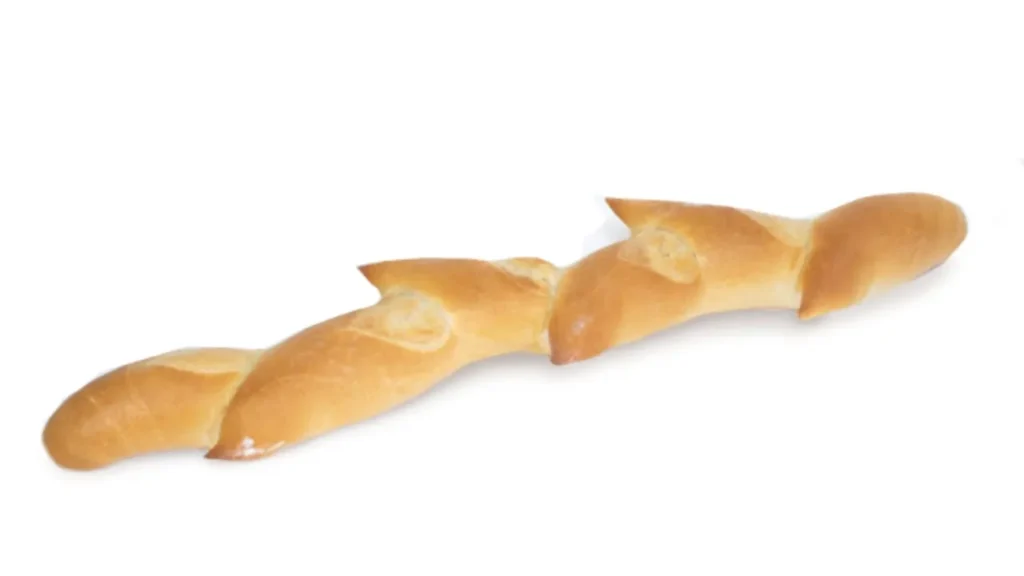
Literally translates as, ear of wheat. In fact, this bread is not much different from a baguette, as it is made from the same dough and shaped in the same way. After fermentation, the sides of the dough are cut with scissors or scraper at a 45-degree angle and then opened to form a wheat spike.
Pain Poilânе
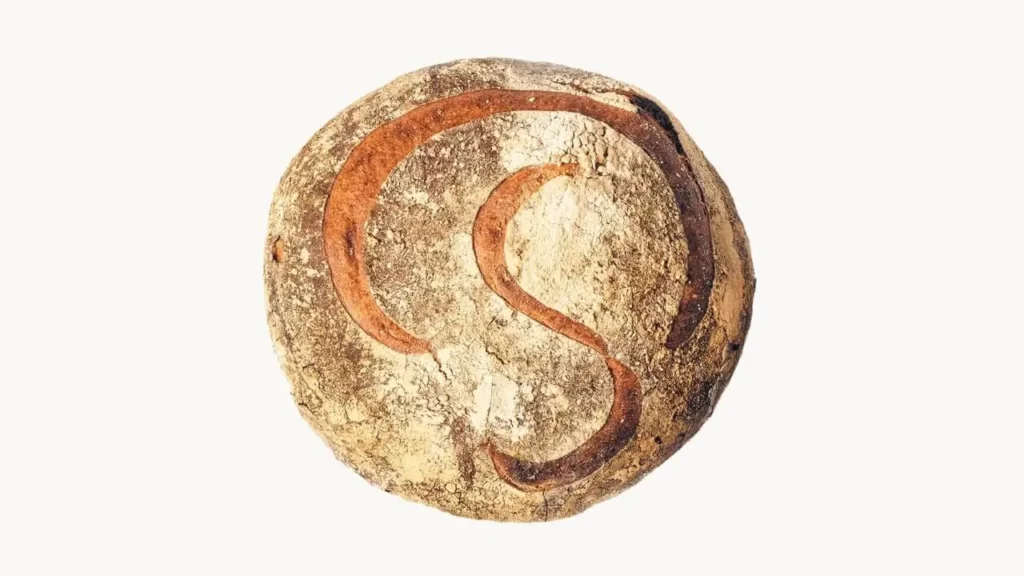
Poilâne bread is famous for reviving an ancient tradition of baking that is only made at Poilâne Bakeries, where three generations—Pierre, Lionel and Apollonia, succeeded each other, but the bread remained the same standards and quality.
The bread is made from stone-ground wheat flour, sea salt, water and natural sourdough starter, prepared by hand, and baked for one hour in a stone oven over a wood fire. The result is a crispy crust and dense, beige crumb with a unique smoky flavor.
Le Floron
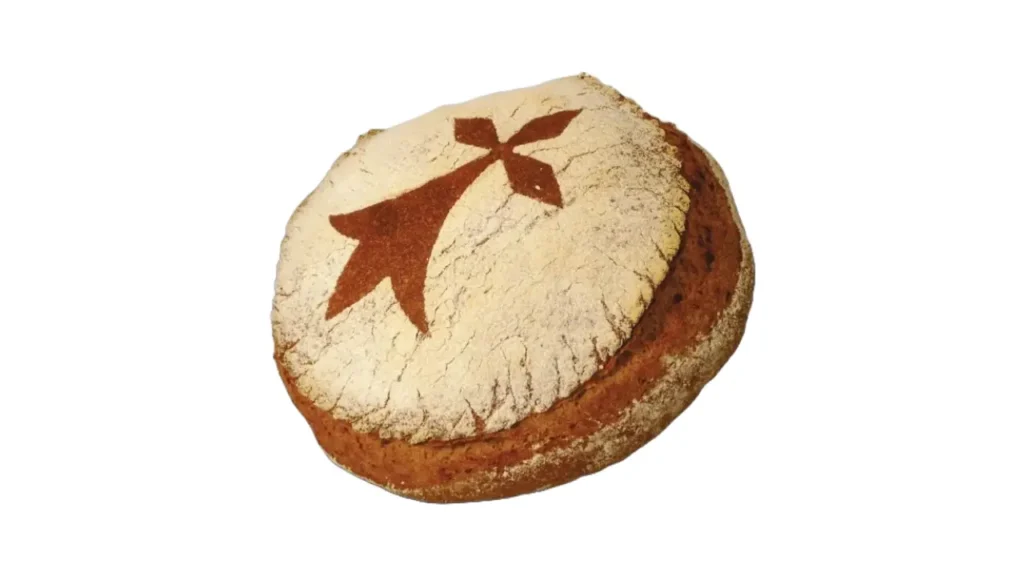
Recognizable by its ermine, which represents the symbol of Brittany, and created by the Association of Bakers of Brittany. This sourdough bread is traditionally made from three different local flours, wheat, rye and buckwheat and often shaped in a round or rectangular shape. Its thick, gray crumb makes it well paired with salted butter and seafood.
Le Bougnat

Originating from the Auvergne Rhône Alpes regions. Le bougnat is a sourdough french bread type made with equal parts organic rye and wheat flour, giving it a tangy flavor and dense crumb. In addition to its extended shelf life, bougnat is versatile and can be used with any meal, but can be difficult to digest after a dinner.
L’amitchote
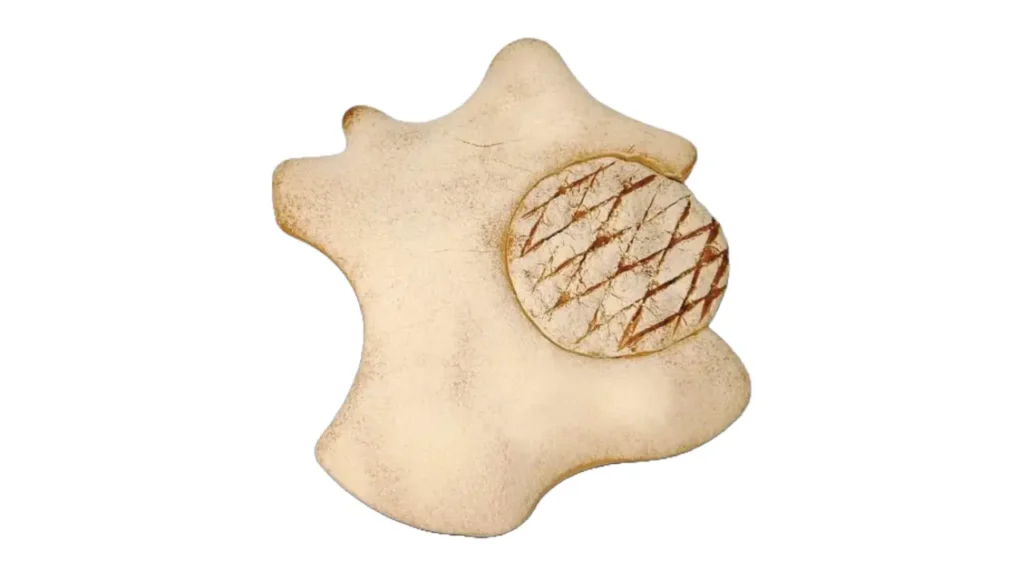
It was first created by Philippe André in 2002 and represents the symbol of the Franche Comté region. L’amitchote consists of two interlocking loaves: A rustic loaf and an aromatic loaf that can be filled with apples, plums, figs or almonds, hazelnuts and walnuts.
Other Traditional French Breads
- Le Souflame: A type of fougasse, traditionally baked over ashes and embers, which gives it a smoky flavor.
- Pain de Méteil: A brown bread made from equal parts rye and wheat flour that can stay fresh for up to 10 days.
- La Pomme-cannelle: A type of sweet roll with a golden crust and dense crumb, usually made with apple, cinnamon and honey.
- Le Subrot: A Yeast-based bread roll, formed by two lozenges one above the other.
- Le pain Tourné: Also known as Pain tordu, originally from the Limousin region and gets its name from its shape.
- Le Bourguignon: Country bread made from sourdough or poolish base dough containing a minimum of 10% rye flour.
- French Rolls: A type of roll that resembles a baguette but is much smaller. It has a crisp crust and soft, chewy interior.
- Le Cramique: A type of brioche filled with sugar and made from an enriched dough with a milk base.
- Le Pain Complet: a French bread type made from whole wheat flour and/or semi-wheat flour . Unlike American whole wheat bread, which is usually baked in a loaf pan, French whole wheat bread can be found in a variety of forms, including bâtard, baguette and boule shape.
- Pain aux Son: Made from wheat bran in combination with bread flour and/or whole wheat flour.
- Pain de Seigle: Made primarily with rye flour, which gives it a unique, dark, dense crumb and slightly sweet flavor.

